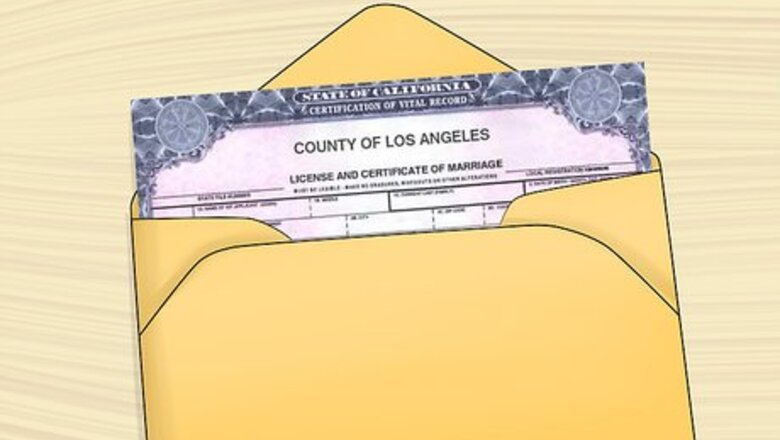
views
Changing Your Name in the U.S.
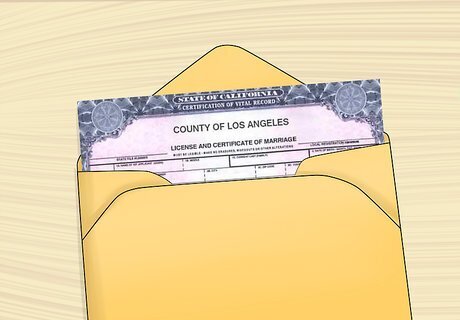
Get copies of your marriage certificate. Go to the clerk's office of the county where you were married. Request several copies of your marriage certificate, which you can use to change your name. Your state might have short- and long-form marriage certificates. Always get the long form.
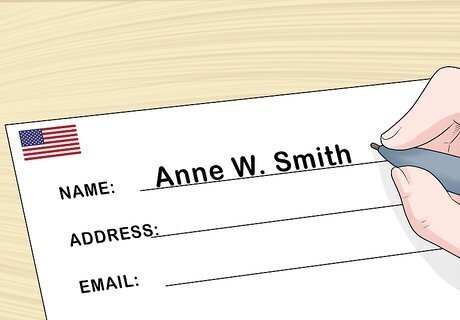
Start using your spouse's name. In the United States, a woman can start using her husband's name without having to get a court's permission. The same might be true of a man taking his wife's name, though it depends on your state. However, most states will require a man to legally change his name through a court. Same-sex marriage is legal in the United States, but laws regarding name changes weren't automatically updated to apply to same-sex couples. You might be able to change your name simply by using your marriage certificate. However, you might face some resistance.
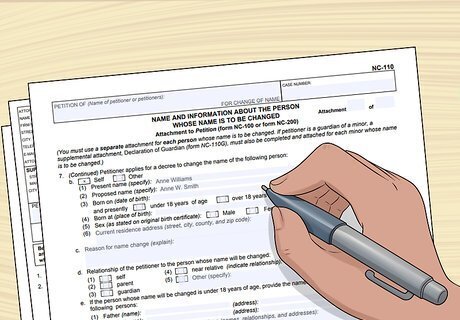
Fill out court forms to request a legal change. You might need a court order if you aren't a woman adopting her husband's last name. In these other situations, you should visit your local courthouse and ask how to change your name. Typically, there will be some forms to fill out. Fill out all forms and file them with the court. You will probably have to pay a filing fee.

Post notice. Depending on your state, you may have to post notice at the courthouse about the name change. Sometimes you might have to publish a notice in the newspaper. The purpose is to notify the public that you're changing your name.

Notify others of the name change. Tell other people your new surname so that they can change their records. For example, notify the following: Schools Employers Government agencies, such as voter registration and the Department of Motor Vehicles Utility companies Banks and financial institutions Credit card companies Insurance companies Post office Club memberships
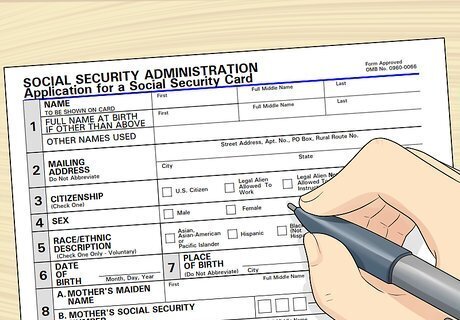
Tell the Social Security office. They have a form you must complete, form SS-5. You can download it from their website. Fill it out and make a copy for your records. Take the completed form to your local Social Security office, which you can find here: https://secure.ssa.gov/ICON/main.jsp.
Changing Your Name in Canada
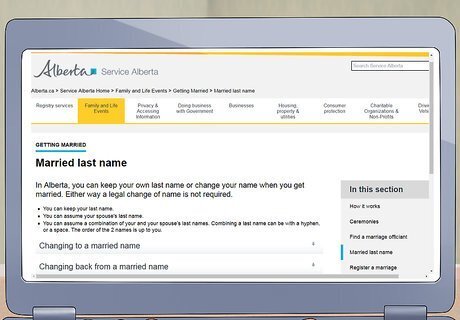
Visit your province's website. The process for changing your name depends on the province where you live. Each province has a different policy, and it's easier to change your name in some provinces than in others. For example, Quebec has a ban on women taking their husband's last name after marriage, and a name change will be approved only in exceptional circumstances. Generally, the other provinces and territories are much more lenient about letting you change your name.
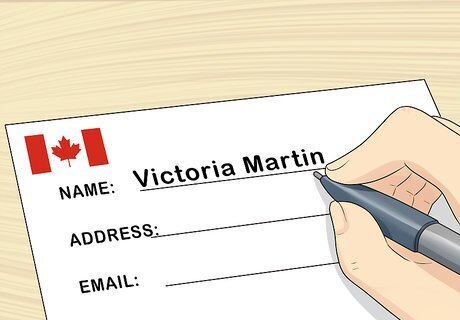
Start using your new last name. In most provinces, you can change your last name after marriage by assuming the name. This won't change the name on your birth certificate. However, you can change your name on your health card, driver's license, and photo card. For example, in Alberta, you can just start using your spouse's last name or any combination of your last names. In British Columbia, you can simply start using your spouse's last name. However, you'll need to file for a legal name change if you're combining names or using your birth name as your new middle name.
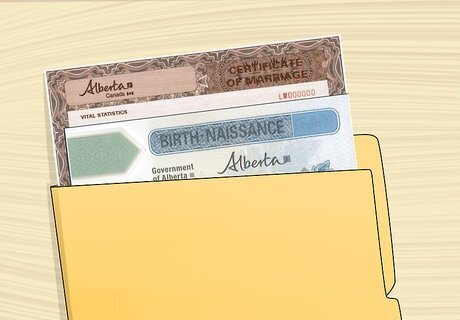
File for a legal name change. Look on your province's website for information about how you can request a legal name change. You will probably have to fill out some forms and submit them to the Vital Statistics Agency or another office. In British Columbia, you can apply and pay online or in person at any Service BC location. You'll need a copy of your marriage and birth certificates. You must also give fingerprints for a criminal background check.
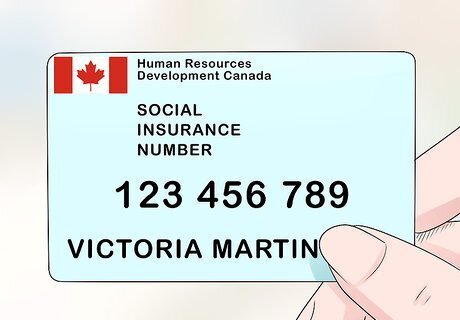
Change your name on identification documents. If you are assuming a spouse's last name, you should get a copy of your marriage certificate from your provincial registry office. If you legally changed your name, it will appear on your marriage certificate. Show these documents to government agencies and other entities so they can update their records. Remember to update your Social Insurance Number (SIN) record. You must present a form of identification, such as your birth certificate, and a copy of your marriage certificate.
Changing Your Name in the U.K.
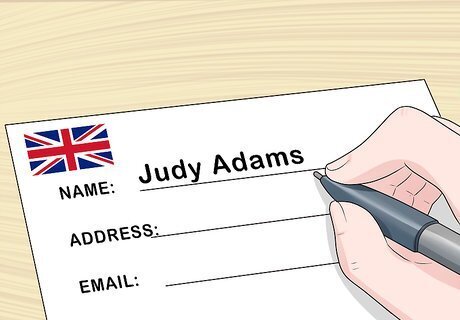
Start using your spouse's surname. You can immediately start using your spouse's surname after marriage. All you need is to send copies of your marriage certificate to any organisation that has a record on you. Your records should be updated free of charge. This applies to both men and women, including those in same-sex marriages.

Change your name by deed poll. If you're a couple combining surnames, or if you want to use your maiden name as your middle name, you'll need to change your name using a deed poll. This is a document you can draw up, that states you are abandoning your previous name and using your new surname at all times. You can pay someone £15-35 to draft the document for you. You can also make your own deed poll by using the sample deed poll available here: https://www.gov.uk/change-name-deed-poll/make-an-adult-deed-poll. Have two people witness you sign the document.

Enroll your deed poll. Some organisations, such as banks, will only accept your deed poll if it is enrolled. You can enroll it for £36 at the Royal Courts of Justice. Send your forms to the Queen's Bench Division, Enforcement Section, Room E15, The Royal Courts of Justice, Strand, London WC2A 2LL.

Notify organisations of your name change. You need to tell people you do business with your new surname. Ask them if they want to see a copy of your marriage certificate or your deed poll. You should contact the following: Employer Doctor and dentist Department for Work and Pensions Financial institutions, such as banks and lenders Insurance companies
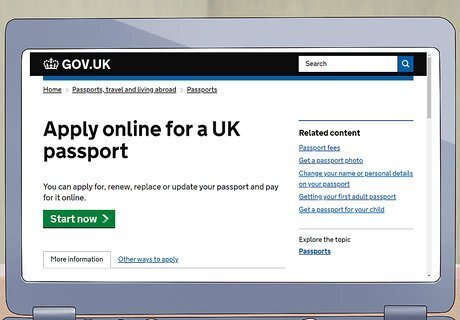
Change your passport. The name in your passport must match the name on your travel itinerary. For this reason, apply for a new passport after changing your name. Submit your marriage certificate or deed poll when you apply. Your deed poll can be enrolled or unenrolled.
Changing Your Name in Australia
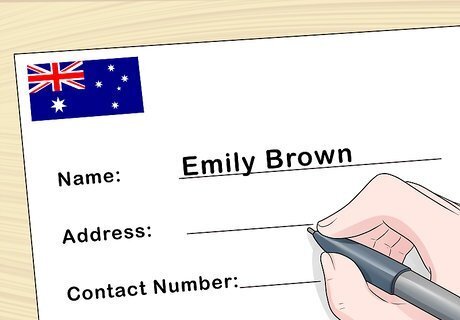
Use your new name. To take your spouse's last name, all you need to do is show your marriage certificate to any government agency or private business. They will update your records. Visit your state or territory's Registry of Births, Deaths and Marriages to obtain copies of your marriage certificates. If you want to change your name in any other way, then must use the standard name change process. For example, use this process if you want to hyphenate last names, combine them, or take your maiden name as your middle name.

Get an application to change your name. If you can't change your name using just a marriage certificate, then obtain an application from your state government. You must have lived in the state for a minimum amount of time to request the change. Fill out the paperwork and submit it along with your fee. If you were born in a different state or territory, you will apply for the name change with the registering authority interstate.

Notify others. Tell every organization you have an account with about your name change. For example, you should change the following: Driver license and car registration Passport Bank accounts Government offices, such as the Electoral Commission, the Taxation Office, and Medicare Insurers Professionals, such as doctors, dentists, and lawyers Memberships
Changing Your Name in New Zealand
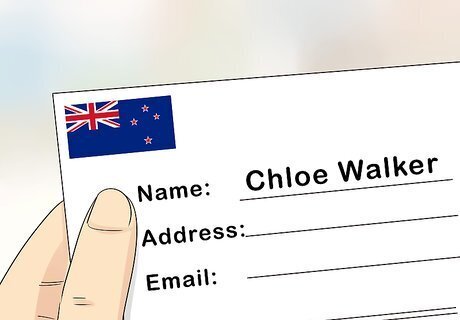
Start using your name new. After you are married, you can take your spouse's name or use a combination of names (such as a hyphenated name). You don't need to complete any forms or go through any sort of process. Instead, you can simply start using your name. However, if you want to use your maiden name as your middle name, you'll need to officially change your name via statutory declaration.
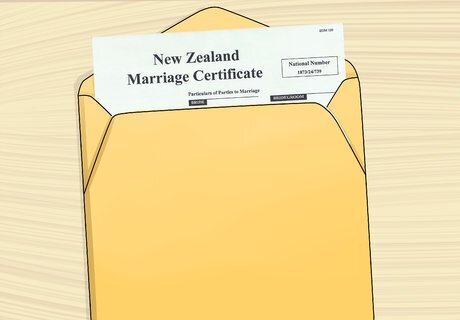
Get a copy of your marriage certificate. You'll need to tell other organizations that you've changed your name. Typically, all you need is to show them a copy of your marriage certificate. Get several copies.
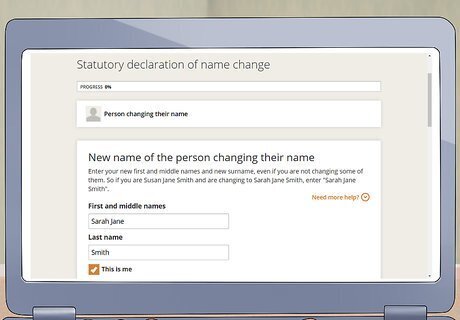
Make name changes by statutory declaration. Fill out an application, which is available online. You will need to sign in front of a notary public, justice of the peace, or other authorized person. Take personal identification to show the authorized person. You'll need to pay a fee, which you can pay with money order, check, or credit card. Send your documents and payments to the Births, Deaths and Marriages office.
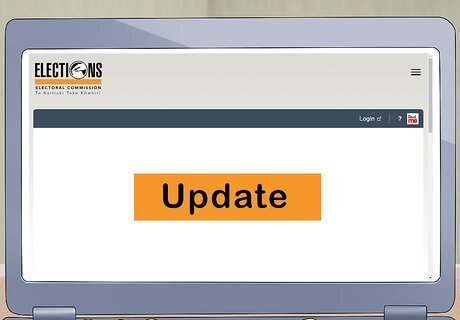
Update your electoral roll details. When you get married, you'll receive a form to fill out from the electoral office. Use it to update your information on the electoral rolls.
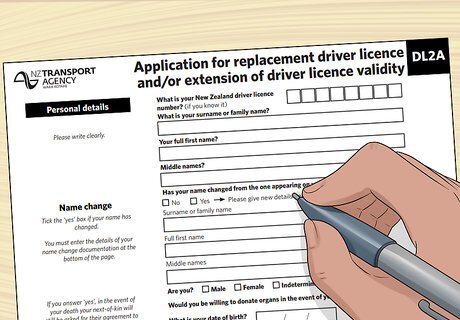
Change your driver license. You aren't required to change your driver license, but you can if you want. Complete the application for a replacement driver license, which is available online. Take the following with you when you visit a NZ Transport Agency licensing agent: Form of identification, such as a current driver license, passport, or other identity documents with a picture Marriage or civil union certificate Fee ($38.20 as of June 2017)
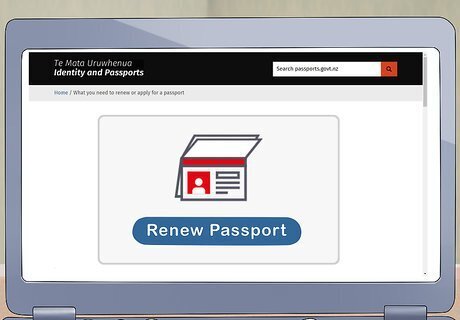
Change the name in your passport. You must apply for a new passport if you want to change the name in it. The name must match your officially registered name. However, if you simply started using your new name without registering it, you don't need to update your passport. You don't need to provide any documents if your marriage took place in New Zealand. If the marriage happened outside New Zealand, then you'll need the original marriage certificate.

















Comments
0 comment